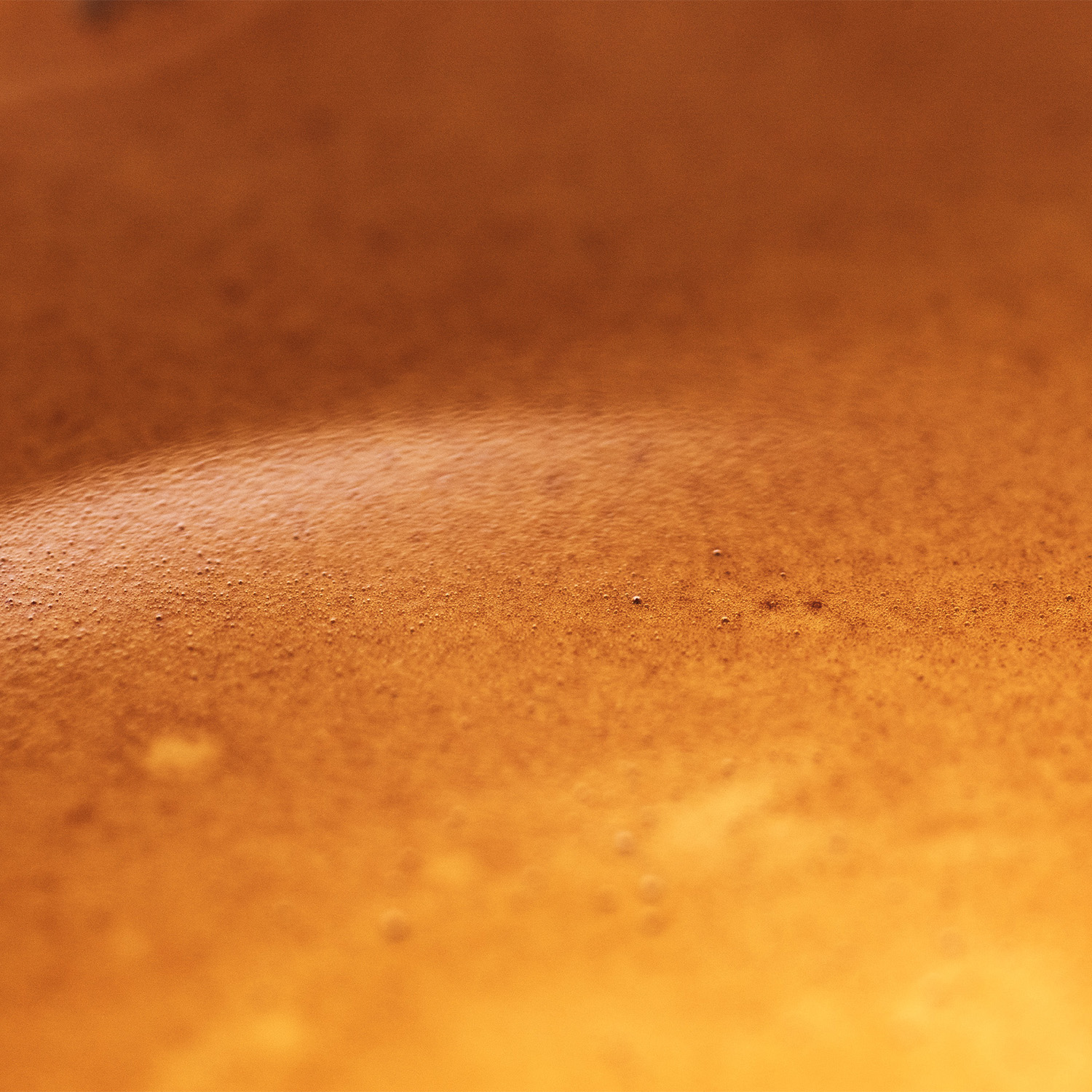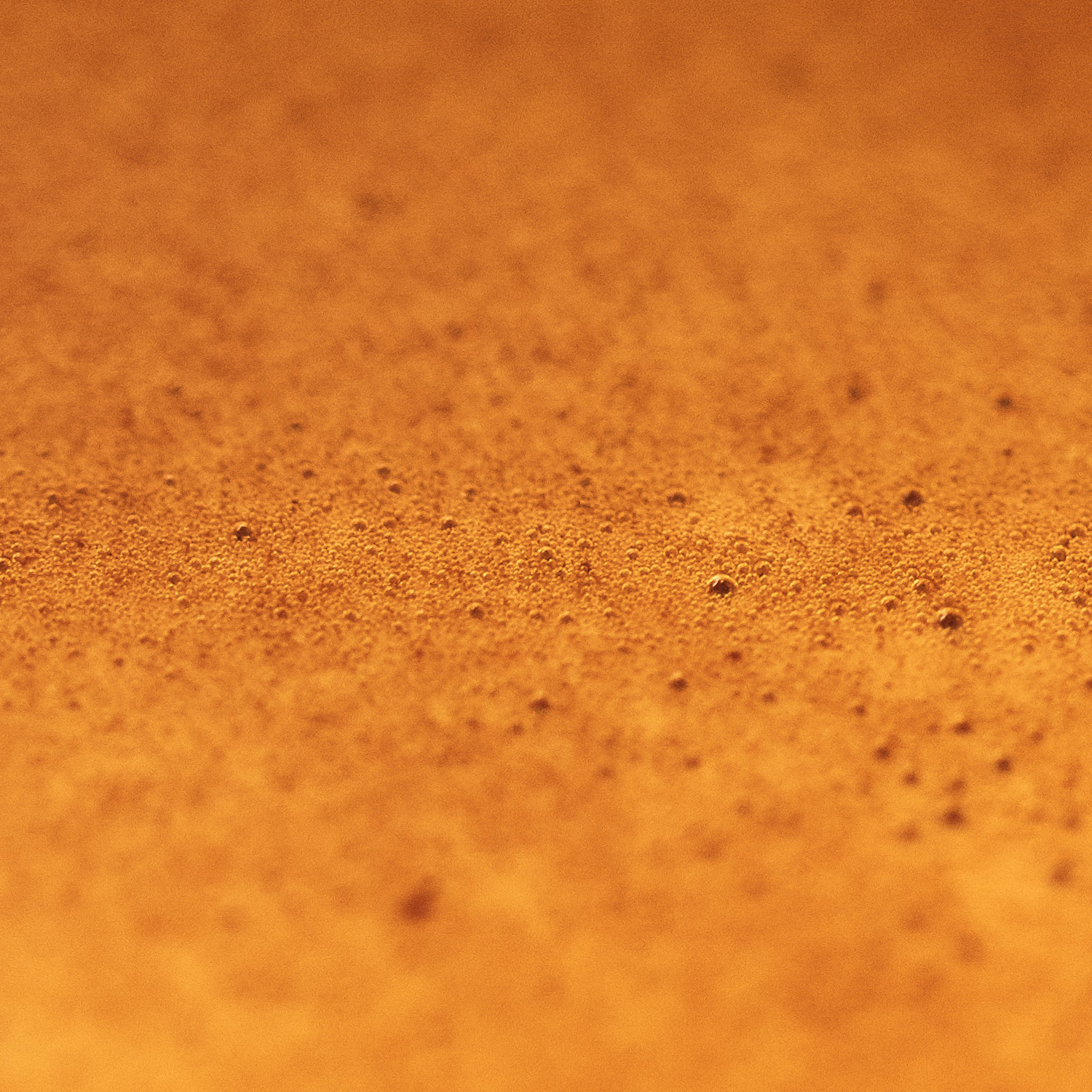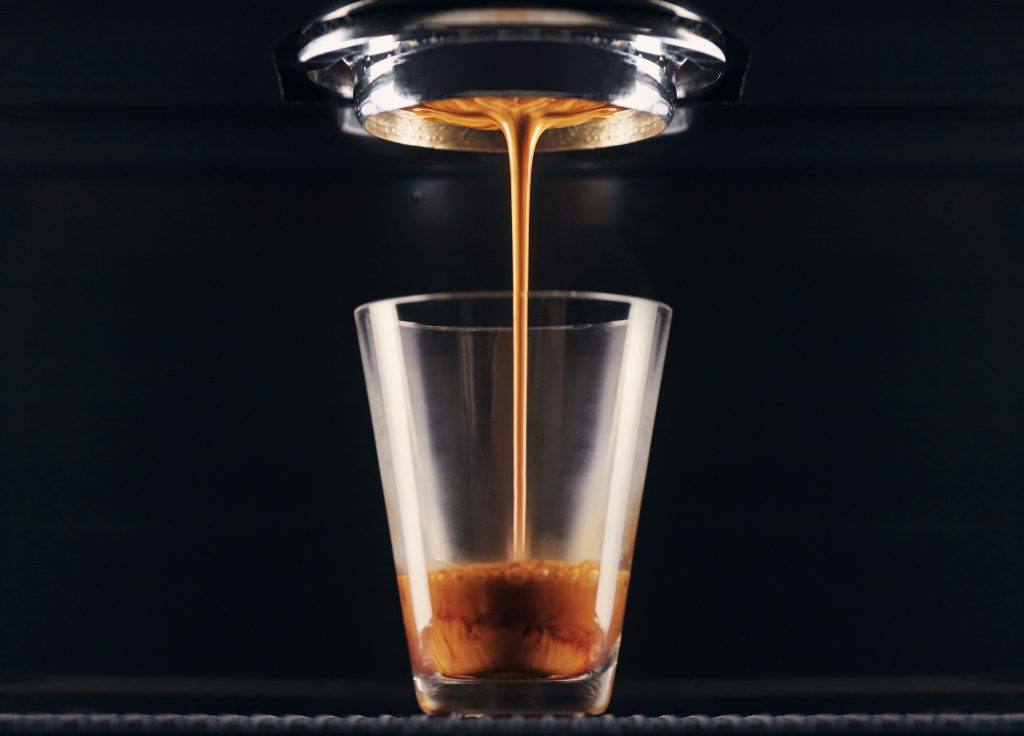It is a truth universally acknowledged that the gases trapped in fresh coffee create bubbles in the espresso, which slow down the flow and reduce extraction. This explains why shots from older coffee run faster, or need a finer grind setting to achieve the same shot time. The bubbles are also often said to prevent water contacting the particles and hence reduce extraction.
Contradicting this however, in the SCA Freshness Handbook, Samo Smrke and colleagues reported that freshly roasted coffee actually needs a slightly finer grind to achieve the same shot time, compared to coffee ten days after roasting. After this, the grind size required gets finer again, as we would expect. The freshly roasted coffee has considerably more gas inside it than the ten day old coffee, so could be expected to produce more bubbles — but nonetheless the shots are running faster.
To find out what’s going on, we took a close look at how gas bubbles form inside an espresso shot — and come up with some alternative explanations for the changes in shot time.
Are bubbles actually forming inside the puck?
Roasted coffee contains trapped gases, mainly CO2, inside the cell structure, which are extracted very quickly on contact with hot water. These gases are responsible for the bloom in filter coffee brewing, the crust in a cupping, and the crema on an espresso. The gases are gradually released to the air over time, which explains why older coffee produces less of a bloom, crust, or crema.


left: crema, right: closeup of crema.
While we can clearly see the gas bubbles in espresso in the crema, it’s not less clear that are a significant amount of bubbles inside the puck itself. CO2 is more soluble at higher pressures, so at least some of the gas released will have been dissolved in the high pressure brewing water inside the puck.
To establish if the CO2 is dissolving or not, first we need to determine how much there is to be dissolved. The CO2 of freshly roasted coffee varies considerably depending on roast style, with reported values from 8-16mg/g (S Smrke et al., 2017). Immediately after grinding, around half of that is lost (X Wang & L-T Lim, 2014), depending on how finely the coffee is ground. “For espresso [grinds] the loss is much higher, around 80% or even more,” Dr Smrke says.
Lighter roasts may contain even less — the SCA freshness handbook gives a figure of 6-7mg/g for light roasted (filter) coffee, and reports that as much as 75% of this may be lost during grinding. We’ll choose a fairly conservative estimate of 6mg/g for our calculations, or a total of 108mg for an 18g shot.
A typical 18g shot might use 70-80ml of water to make an espresso — some of which ends up in the cup, some absorbed in the coffee, and the rest escaping via the exhaust. We’ll assume it all contacts the coffee and therefore the whole volume of water is available to dissolve that CO2.
The solubility of CO2 in water depends on temperature and pressure, which vary throughout the puck. While there might 9 bars of pressure reaching the top of the puck, the coffee when it leaves the basket is back at atmospheric pressure, so there is a gradient of pressure through the puck. Similarly, the water hits the coffee at a set temperature, but loses heat to the coffee as it passes through the puck.
Under typical brewing conditions in the middle of the puck (90°C, 5 bar) 80ml of water will be able to dissolve somewhere around 200mg — comfortably enough to dissolve all the CO2 in the coffee. However, by the time the brew exits the puck, at atmospheric pressure the same amount of water at the same temperature can only dissolve about 40mg — so there will be bubbles forming at least for the last part of the water’s journey through the puck where the pressure is lower.
Do bubbles interfere with flow?
Whether bubbles can block the pores between coffee particles and thus slow down the flow depends on their size, which in turn depends on the pressure. At 5 bars, in the middle of the puck, bubbles would be constrained to be just 0.4μm across, which is small compared to the size of the pores, and so they’re unlikely to have much effect in blocking pores.
However, at lower pressures, such as you’d find at the start of brewing, or towards the bottom of the puck, the bubbles will be considerably larger — so there could be bubbles present large enough to slow flow for at least part of the time, or at the very bottom of the puck during extraction.
Even when the bubbles are small, they do have an overall effect on the viscocity of the liquid — any bubbles dispersed within the liquid will make it more viscous, Dr Smrke says. “[The viscocity] does change based on the bubble size, but it is not easy to estimate the actual effects.”
What else might be happening?
Based on the above numbers, it looks like the hypothesis of bubbles blocking flow in fresher coffee is plausible, even if it won’t be happening throughout the puck but only in a small portion of it, or for a limited time during the early stages of brewing. However, something else must be happening to cause shots to speed up slightly with very fresh coffee.
One possible explanation is that the coffee was sufficiently fresh from the roaster that they were still slightly flexible, which would change the way they grind. While the beans in Dr Smrke’s study were ground at least 1h after roasting, it’s possible that the beans were still less brittle than rested beans, he says.
When coffee beans are less brittle, for example when they are heated, they will produce fewer fines when ground, which in turn will make the shot run faster. While many roasters will grind samples for evaluation in a cupping within a few hours of roast, it’s possible that at this point the grind size distribution is still subtly altered — not enough to ruin the cupping, but enough to change the espresso shot time. Unfortunately, the change in distribution required to create the small change in shot time observed will be very small, and therefore very hard to measure.
Dr Smrke has an alternative idea: that the gas is somehow inducing more channeling. “It could be that the gas obstructs the wetting of the bed and favours channeling,” he explains. “We have observed something similar for filter coffee.” He emphasises that this is speculative though, and that proving that this happens for espresso is another matter. “There is as far as I know no good method to determine the magnitude of channeling in a particular extraction.”
Another interesting possibility was suggested to us by Professor Abbott: A super-fresh coffee will have some near-liquid oils on the surface of the particle. Over time, these oils could either evaporate, or soak back into the cellulose matrix of the coffee particles — but in fresh coffee, the surfaces might still be oily.
This thin layer of oil could cause the particles to stick together more tightly, because of capillary binding, which is very strong. Capillary binding is the same process that allows flies to stick to your ceiling (BNJ Persson, 2007) — a thin layer of liquid between two solid surfaces causes them to stick together, pulled together by the surface tension of the liquid, and the adhesion between the liquid and the solid surface.
Because the particles stick together, tamping will not be able to compress the puck as much (in technical terms, the puck is jamming at a higher void fraction). This creates larger pores for the water to flow through, and thus faster shots or more channeling.
Whatever the mechanism for very fresh coffee making faster espresso shots is, it’s one that most baristas are unlikely to experience in everyday life: the low extraction and ‘gassy’ flavours of too-fresh coffee mean that coffee needs to be rested before being used for espresso, no matter what the effect on shot time and grind size.
End.
